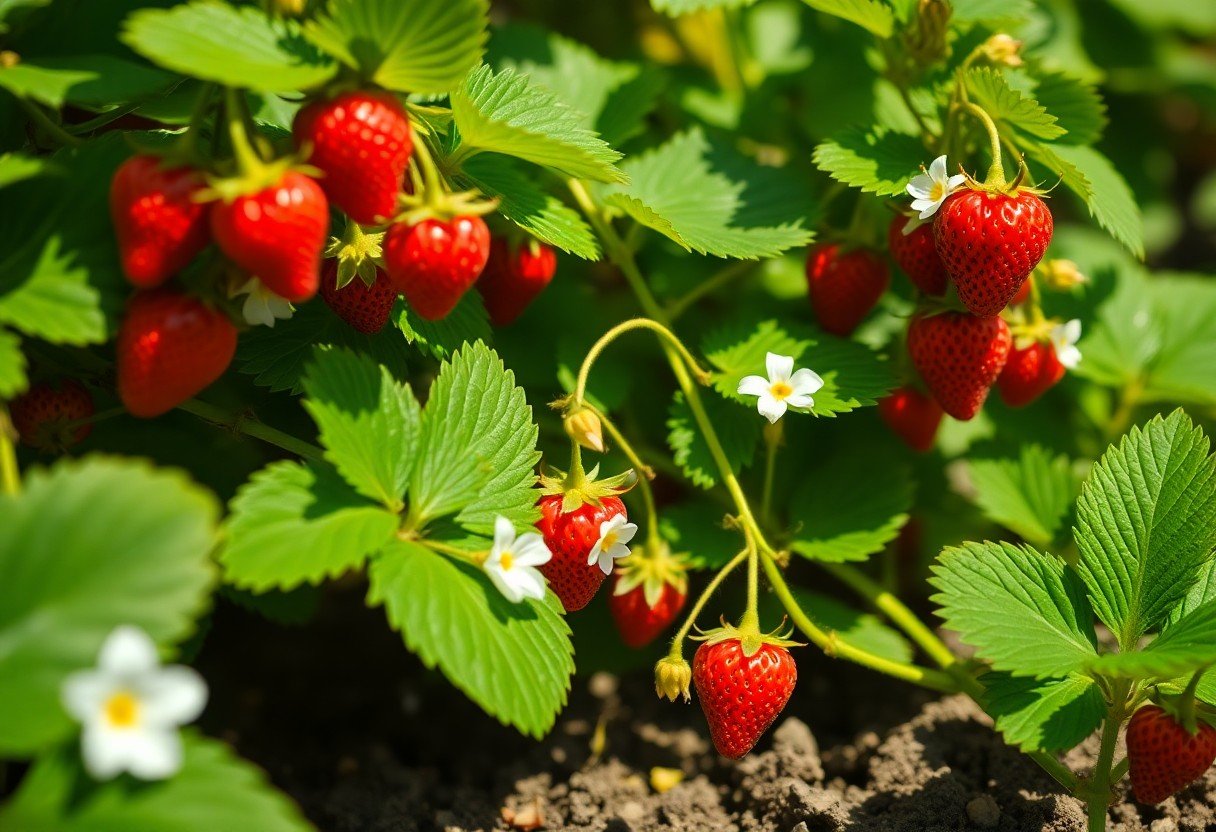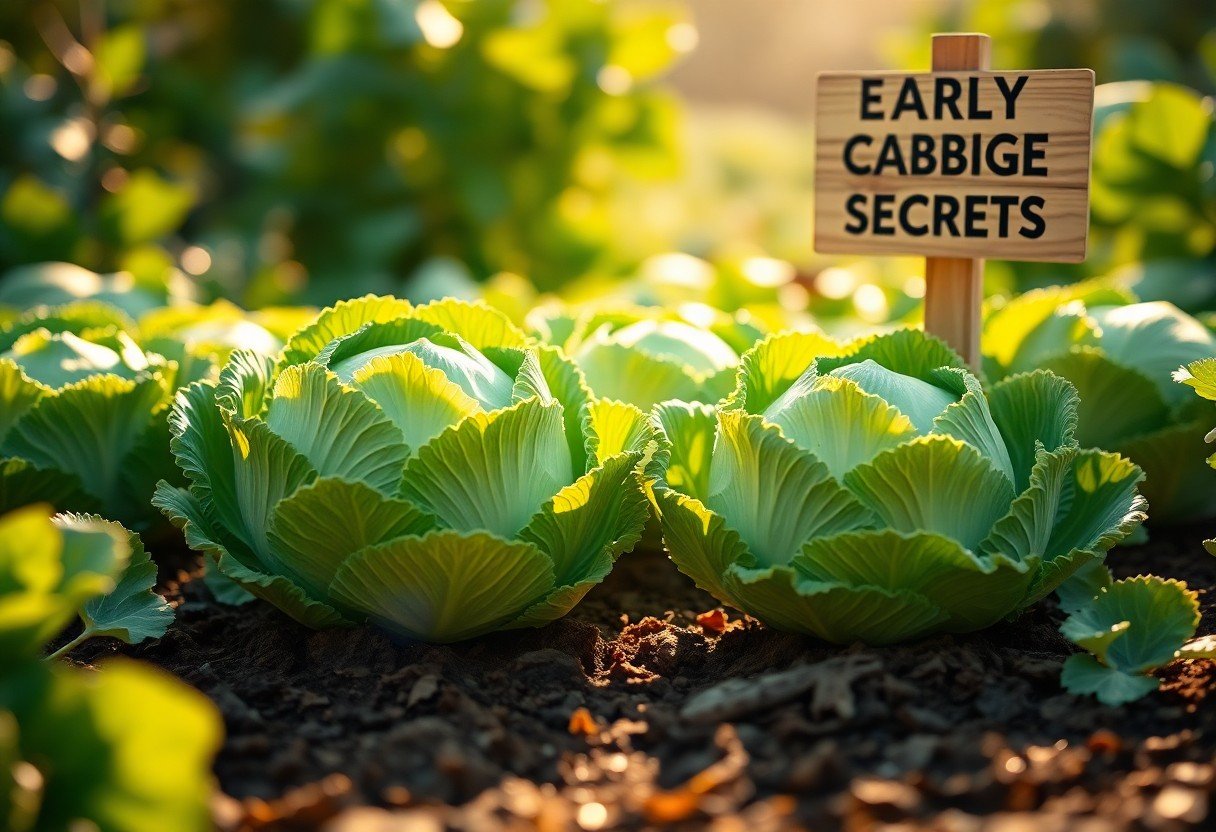There’s a fascinating transformation that takes place in your garden when you plant petunia seeds. From their humble beginnings as tiny seeds, these vibrant flowers undergo a remarkable journey culminating in stunning blooms that can brighten any space. In this blog post, you will explore the stages of growth, the care needed along the way, and how to create a flourishing petunia display that will leave your garden looking spectacular. Get ready to immerse yourself in the wonderful world of petunias and unlock the potential of your garden.
Key Takeaways:
- The life cycle of petunias begins with small seeds that require specific conditions for germination, including warmth and moisture.
- Proper care and maintenance, such as adequate watering, sunlight exposure, and fertilization, are necessary for petunias to thrive and produce beautiful blooms.
- Petunias come in a wide variety of colors and forms, making them versatile plants for gardens and containers, adding vibrant aesthetics to any landscape.
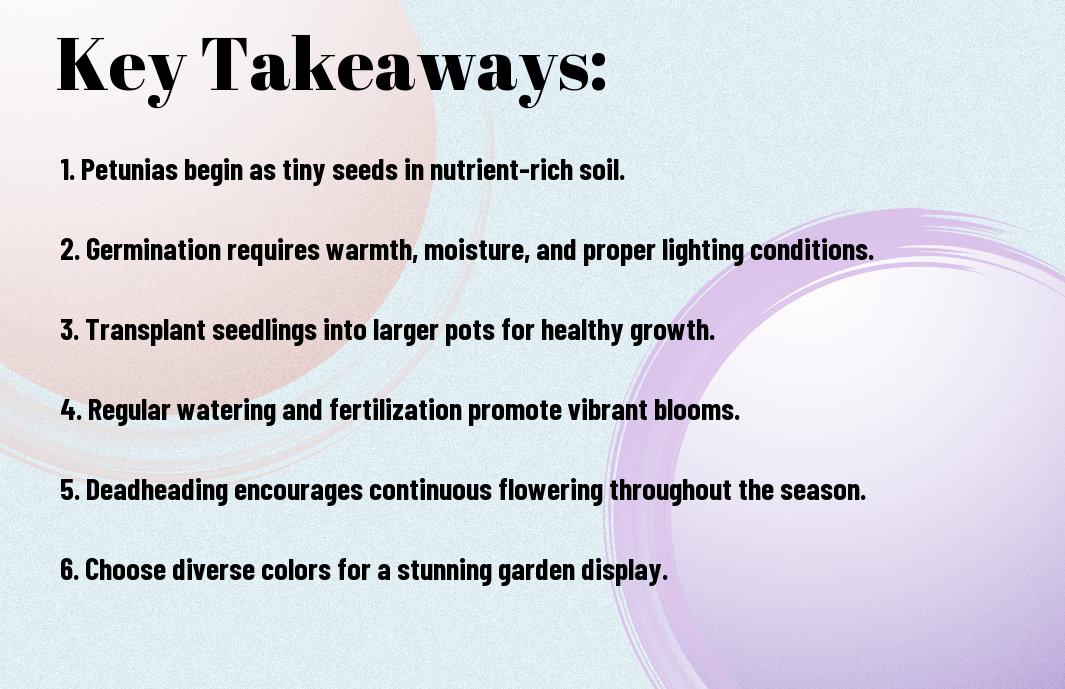
Understanding Petunias
The journey of petunias is fascinating, as they transform from humble seeds into exquisite blooms. To truly appreciate them, it’s crucial to understand their botanical classification, history, and various types. This foundational knowledge will enrich your gardening experience and guide your choices.
Botanical Classification
Along with their captivating beauty, petunias belong to the Solanaceae family, which includes a range of other plants such as tomatoes and potatoes. Their scientific name is Petunia, and they are generally divided into several species, showcasing an array of colors and shapes.
History and Origin of Petunias
Against the backdrop of history, petunias were first discovered in South America, particularly in regions that now include Brazil and Argentina. They were initially valued for their medicinal properties and later gained popularity as ornamental plants in gardens around the world.
In fact, petunias were introduced to Europe in the early 19th century, shortly after their discovery. Their adaptability to various climates and their brilliant colors quickly made them a favorite among gardeners. Over the years, extensive hybridization has led to the diverse ranges of petunias we see today, each more stunning than the last.
Types of Petunias
Above all, petunias come in several types, each offering unique characteristics to enhance your garden. The main categories include cascading, grandiflora, and multiflora, among others. Here’s a brief overview of different types:
| Cascading | Perfect for hanging baskets and containers, these have a trailing growth habit. |
| Grandiflora | Known for their large blooms, these types are ideal for display in garden beds. |
| Multiflora | This type produces clusters of smaller flowers, making them highly floriferous. |
| Wave Petunias | These ground-cover types spread beautifully, creating a colorful carpet of blooms. |
| Night Sky | This variety features a unique starry appearance, adding a touch of magic to your garden. |
- Cascading varieties thrive in containers and hanging arrangements, providing striking visuals.
- Grandiflora types are favored for their bold colors and sizes, catching every gardener’s eye.
- Multiflora varieties are resilient, performing well in diverse conditions throughout the growing season.
- Wave petunias serve as excellent ground cover, filling spaces with their vibrant blooms.
- Knowing the specific type will help tailor your garden design to suit your style.
Botanical attempts to hybridize petunias have led to a range of colors, sizes, and types. Understanding their classification can greatly influence your gardening choices. Here’s an expanded look at the types of petunias:
| Standard | Traditional petunias that come in various colors but feature standard-sized blooms. |
| Pansy | Characterized by their vivid, varied colors and patterns resembling pansies. |
| Tidal Wave | A popular spreading type known for its vigorous growth and stunning blooms. |
| Super Tunias | Famous for their robustness, producing an abundance of flowers throughout the season. |
| King Tut | A unique variety with a regal appearance and exceptional color range. |
- Standard petunias offer classic beauty, fitting well into traditional garden designs.
- Pansy petunias bring an artistic touch with elaborate patterns and shades.
- Tidal Wave varieties are ideal if you’re looking for an avalanche of color.
- Super Tunias flourish with minimal care, rewarding you with abundant blossoms.
- Knowing the specific needs of each type will help you grow petunias successfully.
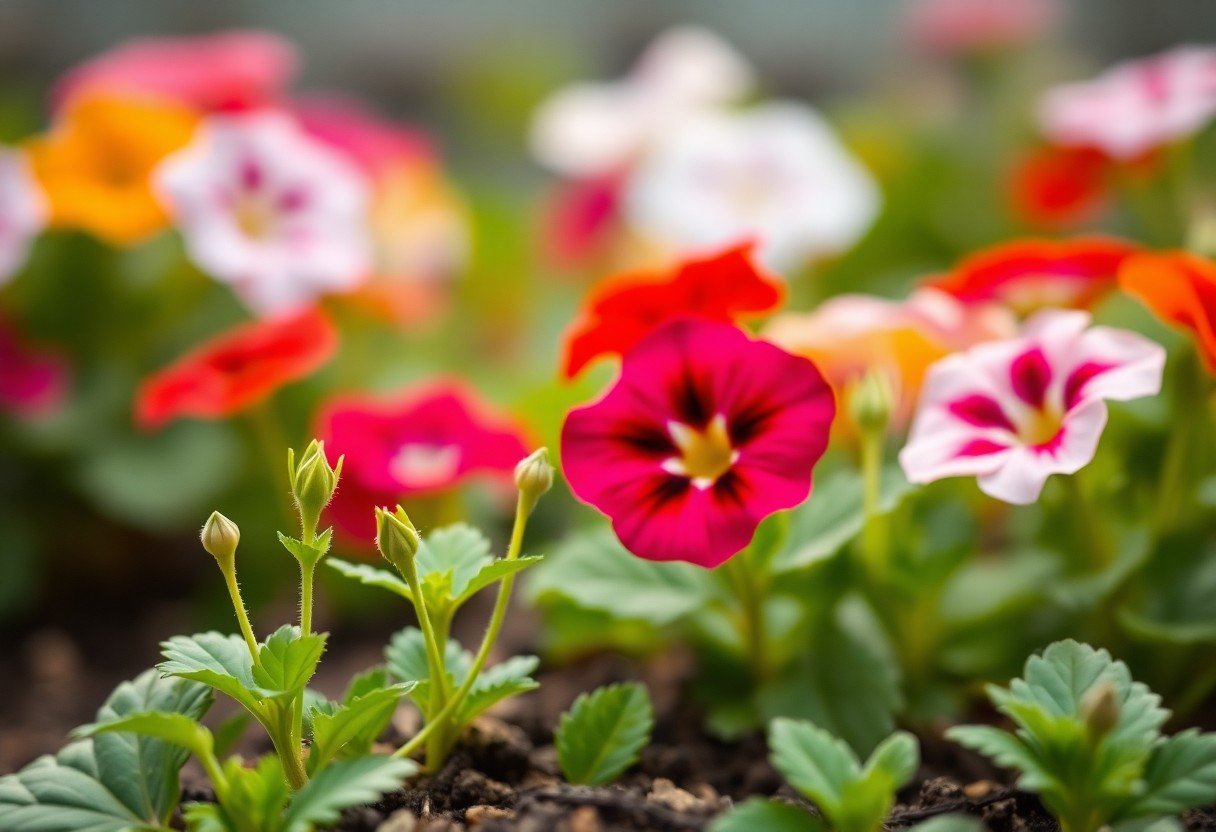
The Life Cycle of a Petunia
Not many flowers go through such an enchanting transformation as petunias. Understanding their life cycle helps you appreciate the beauty that emerges from tiny seeds to vibrant blooms.
Seed Germination
Against the odds, petunia seeds require warmth and moisture to sprout. Typically, it takes about 5 to 10 days for the seeds to germinate under ideal conditions. During this phase, the seeds absorb water and begin to activate enzymes that kickstart their growth.
Seedling Development
Above the surface, as seedlings emerge, they start to develop their first set of true leaves known as cotyledons. This stage is vital as the young plants establish roots and begin photosynthesis, allowing them to gather energy for future growth.
To help your petunias thrive during seedling development, ensure they receive plenty of light and maintain consistent moisture in the soil. You can provide a steady source of nutrients by using a diluted fertilizer, which fosters robust growth and vibrant leaf color. Adequate spacing will also promote air circulation, reducing the risk of disease.
Flowering Stage
Beside developing their structure, petunias begin to bloom, showcasing their vibrant colors and delightful fragrance. This stage typically occurs about 8 to 10 weeks after germination, captivating anyone who comes across them.
Hence, being attentive during the flowering stage is necessary for your petunias. Regular watering, deadheading spent blooms, and using balanced fertilizers will encourage continuous flowering. Additionally, proper sunlight exposure will prevent leggy growth, ensuring your petunias remain lush and visually appealing throughout the blooming period.
Seed Production
Petunia plants will begin to produce seeds once their flowers have been pollinated. This is an impressive feat in the life cycle, allowing you to gather seeds for future planting and propagation.
Considering the prolific nature of petunias, you can collect seeds by allowing the flower heads to mature and dry on the plant. Once dried, gently harvest the seeds and store them in a cool, dry place until the next planting season. This cycle of life ensures that the beauty of petunias continues year after year, adding vibrancy to your garden.
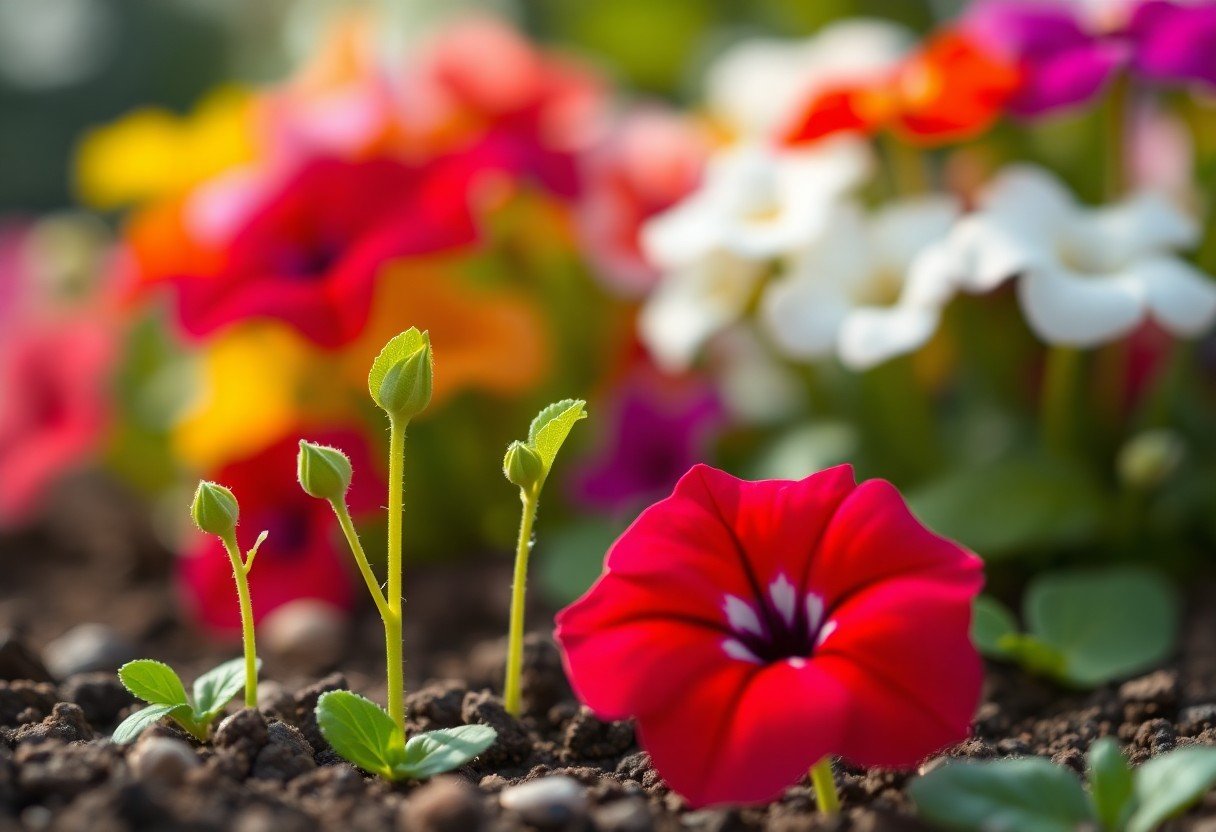
Cultivating Petunias
All successful garden journeys begin with understanding how to properly cultivate your plants, and petunias are no exception. Whether you’re a seasoned gardener or a beginner, knowing the right techniques will ensure you enjoy stunning blooms throughout the growing season.
Choosing the Right Location
After selecting petunia seeds, the next step is finding the ideal location for planting. You should choose a spot that receives at least six hours of full sunlight each day, as petunias thrive in bright light. Additionally, ensure the area has good air circulation to prevent the buildup of moisture and potential diseases.
Planting Techniques
Preparation is key to establishing healthy petunias. When planting, dig a hole that’s approximately twice the diameter of the root ball and place your petunia gently into the soil, ensuring the crown sits level with the ground. Make sure to space your plants about 10 to 12 inches apart to allow for growth and proper air flow.
Plus, don’t forget to enrich the soil with organic matter or a balanced fertilizer before planting, as this promotes robust root development. You can also choose to start petunias indoors to get a head start on the growing season. If you do, transplant them outdoors after the last frost, being cautious not to disturb their roots during the transition.
Watering and Nutrition
Cultivating petunias means paying attention to their watering and nutritional needs. Keep the soil evenly moist, but avoid overwatering, as petunias dislike waterlogged conditions. A deep watering once a week is generally sufficient for established plants.
In addition, providing a balanced liquid fertilizer every couple of weeks during the growing season will enhance their blooming potential. Make sure to follow the instructions on the fertilizer packaging and adjust accordingly based on your plants’ performance, ensuring they receive the nutrients they need without the risk of over-fertilization.
Pest and Disease Management
Once again, managing pests and diseases is vital to ensuring your petunias thrive. By being proactive, you can protect your plants and enjoy their stunning blooms all season long.
Common Pests Affecting Petunias
Pests such as aphids, spider mites, and whiteflies often target petunias, sucking the sap from the plants. These infestations can lead to stunted growth, yellowing leaves, and even plant death if not addressed promptly.
Common Diseases
Around petunias, you’ll encounter diseases such as root rot, powdery mildew, and gray mold. These conditions can affect your plants’ health, leading to unsightly appearances and reduced blooming potential.
Understanding the signs of common diseases is vital. Root rot typically manifests as wilting despite wet soil, while powdery mildew presents as a white powdery coating on leaves. Gray mold often appears during cool, damp conditions, showing as fuzzy, water-soaked spots. Identifying these symptoms early enables you to take action before serious damage occurs.
Prevention and Treatment Strategies
Above all, proper care practices play a significant role in pest and disease management. Regularly inspecting your plants, watering at the base, and ensuring good air circulation can prevent most issues.
At the first signs of trouble, address infestations or infections swiftly. Insecticidal soaps or neem oil can combat pests, while removing affected leaves and improving airflow helps treat diseases. Implementing integrated pest management strategies will allow you to enjoy healthy, beautiful petunias throughout their growing season.
Seasonal Care and Maintenance
Now that you have nurtured your petunias from tiny seeds to vibrant blooms, understanding their seasonal care is crucial for ongoing health and beauty.
Spring Care
By early spring, you should prepare your garden for the arrival of petunias. Ensure the soil is well-drained and enriched with compost or organic matter. As temperatures rise, start your planting process, either by sowing seeds directly or transplanting seedlings. Regular watering helps support their growth as they jumpstart their blooming season.
Summer Maintenance
Between the warm sunlight and potential heat waves, your petunias require diligent attention. Regular deadheading—removing spent flowers—encourages more blooms and keeps your plants looking tidy. Watering deeply but less frequently helps roots establish, while applying a balanced fertilizer every four to six weeks ensures your plants get the crucial nutrients they need to thrive.
Another key aspect of summer maintenance is to monitor for pests and diseases. The warm weather can bring unwanted visitors like aphids or powdery mildew. Keeping an eye out and addressing these problems early will protect your beloved petunias and promote a healthy growing environment.
Fall Preparation
Maintenance in the fall focuses on winding down your petunias for the colder months. As temperatures begin to drop, reduce your watering regimen and continue deadheading to encourage the last blooms. Begin to collect seeds if you’re interested in propagation for the next season.
In addition, consider trimming back any overgrown or leggy stems to help your plants conserve energy. If frost is expected, it’s wise to cover or bring potted petunias indoors to prevent damage. With proper fall preparation, your petunias will be healthy and ready to bloom again in spring.
Winter Dormancy
Around winter, your petunias enter a dormant phase, allowing them to rest until spring. This is a good time to stop fertilizing and significantly reduce watering. If you live in a region with harsher winters, consider bringing your pets indoors or providing protection from frost outside.
Preparation for dormancy involves creating a suitable protective environment if your petunias are still outdoors. Mulching around the base of the plants helps insulate their roots and maintain moisture levels. As winter progresses, checking in on your plants occasionally will ensure they’re resting well, ready to burst back to life when the warm weather returns.

Propagation Methods
For those looking to start their Petunia journey, understanding propagation methods is necessary. You can choose from various techniques, including seed propagation, stem cuttings, and division of plants. Each method has its own advantages and can help you cultivate a vibrant display of petunia blooms.
Seed Propagation
By starting with seeds, you can enjoy the entire lifecycle of petunias. Simply sow the seeds indoors about 10-12 weeks before the last frost date, ensuring they receive adequate light and moisture. This method also offers a diverse selection of petunia varieties to choose from.
Stem Cuttings
At a certain point in your gardening journey, you may decide to propagate your petunias through stem cuttings. This technique allows you to create identical copies of your favorite plants, preserving their unique traits.
This method involves taking healthy stem cuttings from an existing plant and placing them in a growth medium. Ensure that the cuttings are between 3-4 inches long, and remove any leaves from the lower half to encourage root development. Keep the cuttings moist and in indirect light until they establish strong roots, which usually takes about 2-3 weeks.
Division of Plants
By dividing established petunia plants, you can effectively create new ones. This method is particularly beneficial if you have a mature plant that has outgrown its space or if you want to rejuvenate an aging specimen.
In addition to creating new plants, division promotes healthy growth in your original petunia. Gently dig up your plant and separate the root ball into smaller sections, ensuring that each section has enough roots and stems. Replant them in well-draining soil, and you’ll have new petunia plants ready to thrive in your garden.
Summing up
Conclusively, your journey with petunias, from tiny seeds to stunning blooms, is a rewarding experience that showcases the beauty of gardening. By understanding the growth stages, providing the right care, and enjoying the process, you cultivate not just vibrant flowers but also a deeper appreciation for nature’s wonders. As you nurture your petunias, you enhance your outdoor spaces and create lasting memories, making your gardening adventure truly fulfilling. Embrace the joys and challenges that come with this journey, and let your gardening skills blossom alongside your petunias.
FAQ
Q: What is the best way to start growing petunias from seeds?
A: To successfully grow petunias from seeds, start by choosing high-quality seeds and a seed-starting mix. Fill seed trays or small containers with the mix, and moisten it slightly. Scatter the seeds on top of the soil without covering them, as they need light to germinate. Place the trays in a warm area with indirect sunlight or under grow lights. Keep the soil consistently moist but not soggy. Once the seedlings appear, ensure they have adequate light to grow strong and healthy.
Q: How long does it take for petunia seeds to bloom once planted?
A: Petunia seeds typically take about 10 to 14 days to germinate, depending on temperature and moisture levels. After germination, it usually takes around 8 to 12 weeks for petunias to grow large enough to be transplanted outdoors. Once planted in the garden or containers, you can expect your petunias to bloom in about 2 to 3 months, giving you a vibrant display of flowers throughout the summer season.
Q: What are some tips for caring for petunias after they bloom?
A: Caring for petunias after they bloom involves a few key practices. First, ensure they receive plenty of sunlight—at least 6 hours of direct sunlight each day. Regular watering is important, so keep the soil evenly moist, but avoid waterlogging. Fertilizing every few weeks with a balanced liquid fertilizer can encourage further blooming. Deadheading, or removing spent flowers, will promote new growth and extend the blooming period. Lastly, watch for pests and diseases, and treat them promptly to maintain healthy plants.
